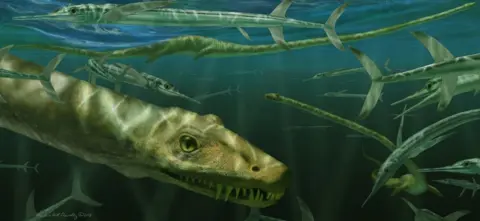Three-toed prints from B.C., Alberta fill gap in fossil record

The new species, which has been named Ruopodosaurus clava, would have been an armoured dinosaur about five to six metres long, reports a new study published this week in the Journal of Vertebrate Paleontology.
Victoria Arbour, curator of paleontology at the Royal B.C. Museum and lead author of the new study, said Ruopodosaurus would have lumbered through the coastal redwood forests between the Rocky Mountains and an inland sea that covered Saskatchewan and Alberta during the Middle Cretaceous, about 100 million to 94 million years ago. Previously identified footprints suggest the other creatures it lived alongside: giant crocodiles, duck-billed dinosaurs and bird-like dinosaurs — and a related group of four-toed ankylosaurs.
But no bones of three-toed, club-tailed ankylosaurs have ever been found in North America from the Middle Cretaceous, which, until now, suggested they may have gone extinct during this time, before reappearing about 84 million years ago, perhaps by the migration of populations from Asia. The tracks from this new species suggest otherwise.
This species, Arbour said, is “new for North America. It’s new for the world…. And it really helps us fill in this gap in the fossil record.”

More to read: https://www.cbc.ca/news/science/ankylosaurid-footprints-1.7511766





